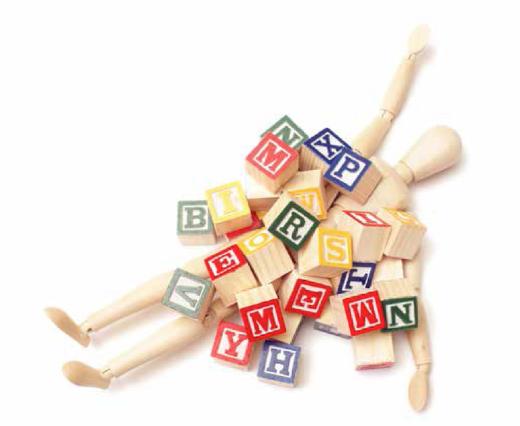You are here
Learning differences
By Family Flavours - Aug 19,2018 - Last updated at Aug 19,2018

Photo courtesy of Family Flavours magazine
While terminology has evolved from learning “disability” to learning “difficulties”, learning difficulties specialist Rania Sayegh goes a step further in encouraging us to think about learning “differences”.
These difficulties focus on “weaknesses” in a child’s underlining skills and may isolate them from other learners. However, the term “learning differences” highlights the fact that they simply learn differently and have as much to offer and contribute as anyone else.
Early signs
At Ask Our Experts II* workshop, Sayegh stressed the importance of identifying learning differences (LD) early in order to pave the way for children to get the support they need for a successful future both in and out of school. Understanding developmental milestones helps with early diagnosis and intervention, she says. LD cannot be formally diagnosed before the age of seven years, but here are a few early signs (keep in mind that professional assessments are recommended and available in Jordan):
• Communication challenges, such as slow language development, difficulty with speech, problems understanding what is being said or in communicating thoughts
• Challenges in gross or fine motor coordination, (hopping, dressing, cutting, stringing beads)
• Problems with memory, routine, and multiple instructions
• Slow processing, such as taking a longer time to finish tasks given compared to peers
• Sensory processing issues (oversensitive to sights, sounds, textures, flavours, smells and other sensory input)
Sayegh brings up the lack of awareness in Jordan even among medical professionals and educators, and points to efforts to work with schools and paediatric clinics, such as providing them with checklists of what to look out for. She adds that it’s important to reach out to everyone involved in a child’s life, including grandparents and the helper at home. She also hopes to see more local apps and television programmes that centre on children’s’ emotional well-being.
LD signs in
school-aged children
Difficulty learning letters, confusing similar letters like “b” and “d” or “m” and “w” or “n” and “u”, and difficulty blending letters to read
Misreading words, skipping words or lines and guessing words
Spelling difficulties
Having great ideas but unable to put them down on paper, difficulty in self-expression in writing (organisation, spelling and handwriting)
Wrong pencil grip, illegible handwriting, slow when copying and hands hurts when writing for a while
Difficulty learning new maths concepts, confusing signs, difficulty aligning numbers in mathematical equtions, difficulty with word problems
Difficulty understanding what the child reads
Learning styles
Each person has his own learning style, explains Sayegh. “The more we [parents and educators] can discover the child’s learning style [how they retain information for instance], the better off we’ll be in unlocking the keys to their learning skills.”
Here are some learning styles, but let us remember that many children and adults use a combination of styles.
• Visual: Learns through seeing and observing, needs visual cues. Preference for images Auditory: Learns through listening and talking things through. Preference for sound and music. Enjoys audio books and recordings
• Tactile: Learns through touch and using their hands
• Kinaesthetic: Learns through moving and doing. Preference for movement of the body. May not be able to sit still for long periods of time. Enjoys moving while learning
As for homework, Sayegh says it should not exceed 45 minutes a day. More than an hour can put children at risk of higher stress levels and poor mental and physical health. Here are a few of the tips Sayegh shares with parents:
• Establishing a study routine that includes a set time each day. Base this on your child’s temperament. Perhaps he is at his best after an hour of downtime Avoid late evening, which for most children is meltdown time!
• Posting a daily plan or weekly calendar on your child’s tablet or in a common living space that includes homework start and finish times each day.
• Giving advance notice of homework time to make it easier to shift from fun time to work time. You can say, “You can play for 15 more minutes, then it’s homework time”
• Letting your child get up to move around can help maintain focus. Keep in mind your child’s learning style(s) as well as the fact that your child has probably had enough sitting at school
Sayegh’s takeaway message for parents: Children need to feel safe, loved and accepted more than anything else. Only then can they truly flourish.
Reprinted with permission from Family Flavours magazine
Related Articles
By Dina HalasehEducational Psychologist Is your child not putting in any effort or refusing to do assignments?
By Sirsa QurshaChild Development andParenting SpecialistHomework is usually dreaded by both parents and children alike!
Reading difficulties usually point to a child’s struggle with reading accuracy, speed and children. Some only struggle with speed, while others might struggle with all three. The severity or type of difficulties varies from one child to the other.



















